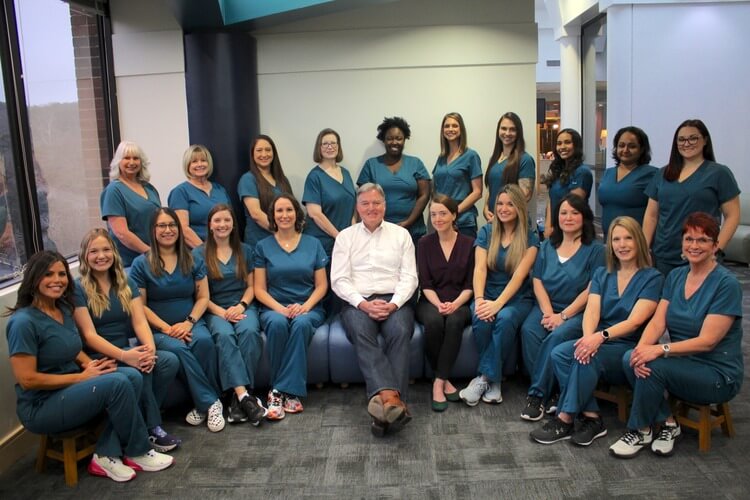
With traditional braces, your orthodontist attaches small brackets to the teeth and uses a variety of wires to exert a pulling force. As the wires “pull” the tooth in a certain direction, the cells surrounding that tooth’s root stimulate the bone remodeling process. Healthy and safe orthodontic movement requires good bone remodeling, and good bone remodeling requires the expertise of a licensed and board-certified orthodontist.
Throughout orthodontic treatment with traditional braces, patients see their orthodontist on a consistent basis for evaluation. During these evaluation visits, the doctor is confirming the proper movement of the teeth. He or she may also adjust the current wire or replace it with a new wire in order to carry out the desired movement.
We use brackets made from a variety of materials, including metal and ceramic. Ceramic brackets are tooth-colored, and they are less visible than the metallic ones. You may wonder why we do not use ceramic brackets for all patients. The reason is that ceramic brackets are more likely to break under pressure, and they are less comfortable inside the mouth. Metal brackets can be smaller in size and accomplish the same movements as a ceramic bracket. We will explain the pros and cons of each type of bracket to each individual patient and then leave the decision to him or her.
Traditional metal or clear/ ceramic braces use wires connected to fixed brackets to pull your teeth into place. Traditional braces are great in treating orthodontic conditions that Invisalign cannot. However, before committing to treatment, it’s important to consider some modifications you may need to make to your day-to-day life:
Caring for your braces properly requires diligence and good habits. To ensure your mouth stays healthy and your treatment progresses properly, follow these tips:
When wearing braces it’s important to stay away from crunchy, sticky, and chewy foods for a while. These foods can get caught in your brackets and wires and damage your teeth or braces! Remember our helpful rhymes so you know the foods to stay away from.
All of these foods should be avoided for a while, but remember, it’s all for a beautiful smile!
Young people in need of braces will likely feel nervous, excited, confused, or indifferent. Committing to orthodontic treatment can be overwhelming for many kids, that’s why it’s important for parents to be there for support and to help our kids adjust.
Maintaining proper brushing and flossing techniques when wearing braces or clear aligners is crucial. Without effective oral hygiene, the foods you eat will get caught in your teeth or appliances and lead to plaque buildup that can cause staining, cavities, or gingivitis and decalcification. Also be sure to ask about our Orthodontic Hygiene Program to ensure you’re getting regular professional cleanings and feedback on your brushing and flossing technique.
To keep your oral health in good condition while wearing braces, here are some at-home tips we recommend:


Our team has delivered outstanding pediatric dental care in North Austin for over 45 years. We are committed to providing our community with safe, gentle, high-quality dental care.
Should you have any questions or concerns regarding your dental care, we are more than happy to discuss how you can achieve a beautiful and healthy smile.
As a top pediatric dentist in North Austin, we have helped hundreds of families achieve their oral health goals and are eager to help you and your family do the same.
Pediatric Dental Professionals © 2025 | All Rights Reserved